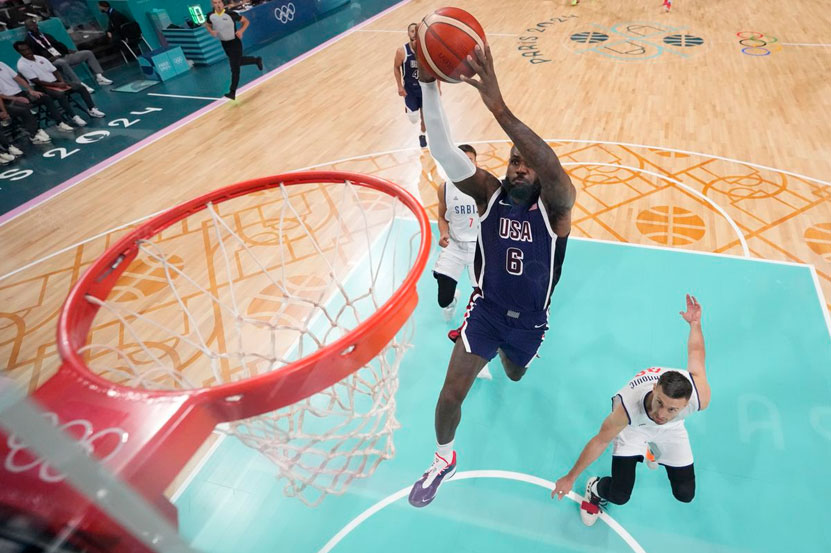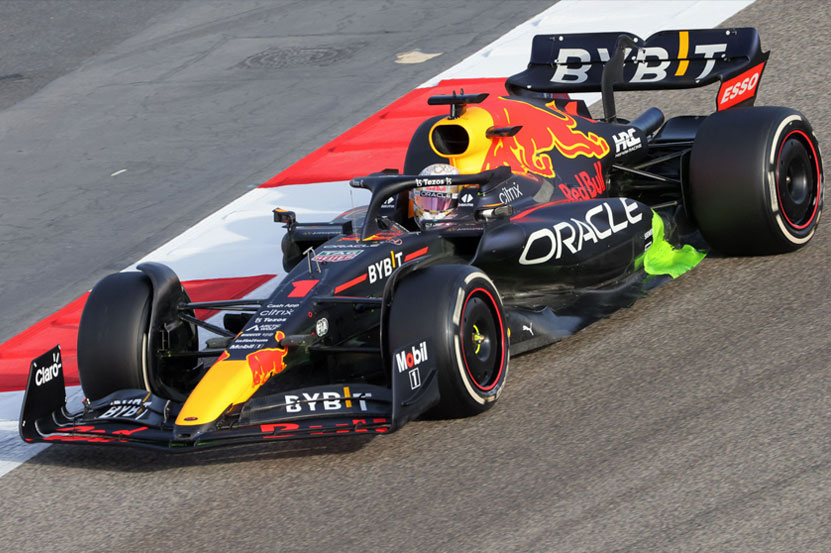Broadcast giants and streaming platforms shovel billions into live events because sport is the last form of TV people insist on watching in real time. Add sponsorships, licensed gear, wagering, gate receipts, and the sparkling new field of social-media monetisation, and you get a global cash river that reached roughly US $170 billion in 2024 alone.
The ten sports below top that river in 2025. Figures come from league filings, investor reports, and market-research studies published within the past year; they round to the nearest tenth where needed. Values are for the most recent full fiscal or calendar year available (usually 2024) and convert to U.S. dollars for easy comparison.
1. American Football

Annual revenue: ≈ US $23 billion (NFL only)
No other domestic league comes close. The NFL’s eleven-year, US $111 billion media package with Fox, CBS, NBC, ESPN/ABC, and Amazon Prime is the sport’s turbocharger. Add a Super Bowl that just drew a record 127 million viewers and you have a licence to print cash. Gambling partnerships, luxury seat licences, and team-owned real-estate projects (think SoFi Stadium’s 300-acre district) layer on extra income. Commissioner Roger Goodell’s long-standing target of US $25 billion by 2027 now looks comfortably in sight.
Why it keeps growing
- Flagship events are national holidays in the United States.
- The league shares most national revenue equally, so every club can afford giant payrolls.
- Five regular-season games will be staged overseas in 2025, deepening the global fan funnel without diluting home markets.
2. Baseball

Annual revenue: ≈ US $12.1 billion (MLB)
After a pandemic slump, baseball bounced back with its best attendance since 2017 and the highest gross in league history. Real-estate complexes such as the Braves’ Battery Atlanta and the Cubs-adjacent Wrigleyville pour rental, hotel, and retail dollars into club ledgers. The next challenge is stabilising local-TV money now that several regional sports networks have entered bankruptcy.
Why it keeps growing
- Rule tweaks sped up games, pulling younger viewers back to ballparks.
- A looming round of expanded playoffs sells extra national broadcasts.
- Franchises own or co-own surrounding districts, turning every home date into an all-day festival.
3. Basketball

Annual revenue: ≈ US $13 billion (NBA)
Basketball is the definition of a portable product: 48-minute games, recognisable stars, and highlights made for vertical phone screens. A forthcoming 11-year U.S. rights deal reportedly worth US $76 billion will kick in from 2026 and likely lift league income past baseball. Team valuations already average US $4.2 billion; the Warriors top the list at US $8.8 billion.
Why it keeps growing
- Globalisation: over one-quarter of today’s players were born outside the United States.
- A 12-month media cycle — Summer League, free-agency frenzy, in-season tournament — keeps eyeballs locked in even when no one is dribbling.
- Fashion and sneaker culture create revenue streams well beyond ticket sales.
4. Soccer (Association Football)

Annual revenue: ≈ US $50 billion
No single body tracks the entire planet’s output, but clues abound: Europe’s professional game alone brought in €35.3 billion (≈ US $38 billion) in 2022/23, and the world’s 20 richest clubs generated €11.2 billion (≈ US $12 billion) in 2023/24. Real Madrid became the first club ever to top €1 billion all by itself.
Why it keeps growing
- A truly global fan base guarantees at least one blockbuster match every single day.
- World Cup flavour never fades: 2023 women’s edition drew 2 billion viewers and fresh sponsors.
- Saudi, U.S., and private-equity money now fight to buy clubs, leagues, and even tournaments, inflating rights fees across the board.
5. Ice Hockey

Annual revenue: ≈ US $6.6 billion (NHL)
The NHL set records in attendance, digital impressions, and sponsorships during 2024–25. A new decade-long U.S. media deal with ESPN and TNT, plus streaming side-agreements with ESPN+ and Max, is worth about US $625 million a year; Canadian rights via Rogers add another C$5.2 billion over twelve seasons. The league is testing outdoor “stadium series” games in non-traditional markets like Seattle and Carolina to widen its audience.
Why it keeps growing
- Betting partnerships bolster once-sluggish U.S. revenue.
- Stadium-series spectacles create additional premium ticket inventory.
- Player personalities thrive on social clips, crucial for Gen-Z reach.
6. Formula 1

Annual revenue: ≈ US $3.6 billion
A decade ago the paddock relied on petrochemical sponsors; now you’ll spot Netflix, Chanel, Lego, and a forthcoming Brad Pitt feature film. Liberty Media’s stewardship turbocharged media rights, sponsorship, and race-hosting fees, with the Las Vegas Grand Prix alone paying a rumoured US $500 million licence. Three U.S. rounds, plus planned returns to Africa, keep the spotlight white-hot.
Why it keeps growing
- The “Drive to Survive” docuseries created millions of first-time fans.
- Luxury brands consider the grid a rolling fashion runway.
- Sprint-race weekends squeeze two rights packages out of one location.
7. Cricket

Annual revenue: ≈ US $3.7 billion globally, of which the BCCI alone earned roughly US $2.38 billion in FY 2024
Cricket’s money telescope points squarely at India. Disney Star and Viacom18 paid a combined US $6.2 billion for five years of IPL media rights in 2022; the ripple lifts every subsequent rights auction. The ICC has already pre-sold its 2024-31 global events for US $3.2 billion, with 94 percent coming from the Indian market.
Why it keeps growing
- Short-form Twenty20 matches finish in three hours, perfect for TV and sponsorship activations.
- Franchise leagues in the U.S., UAE, and South Africa piggy-back on IPL brand power.
- India–Pakistan contests remain the single most valuable TV slot in international cricket.
8. Tennis

Annual revenue: ≈ US $5.2 billion (global market for tournaments, gear, and associated services)
The sport may look fragmented — four Grand Slams, two pro tours, dozens of independent events — yet prize money and commercial income are rising fast. Wimbledon alone pulled in US $124.7 million in sponsorship last year. Saudi Arabia’s Public Investment Fund is sniffing around a unified Premier Tour that could inject an extra billion dollars annually from 2026.
Why it keeps growing
- A calendar that touches every continent ensures year-round exposure.
- Equal-pay pledges at top events attract a broader corporate base.
- Off-court content — coaching videos, fashion shoots, behind-the-baseline mics — multiplies monetisation points.
9. Boxing

Annual revenue: ≈ US $8.2 billion (global market size)
The sport’s traditional structure — separate promoters, sanctioning bodies, and broadcast partners — makes totals hazy, yet analyst consensus puts the 2024 pie north of eight billion dollars. Gear sales alone hit US $1.68 billion. Pay-per-view remains king: one projected clash between Canelo Álvarez and Jake Paul carries a purse of £160 million (≈ US $200 million).
Why it keeps growing
- Celebrity and “crossover” bouts reach fans who rarely watch traditional cards.
- Saudi Arabia has become the Las Vegas of heavyweight title fights, writing nine-figure site fees.
- Streaming platforms bundle PPV upsells inside subscriptions, lowering pirate streams and lifting net revenue.
10. Mixed Martial Arts (MMA)

Annual revenue: ≈ US $1.4 billion (UFC only)
The Ultimate Fighting Championship towers over every other promotion; its parent TKO Group posted US $1.406 billion from the octagon in 2024. Media rights deliver the bulk (US $879 million), and a new U.S. deal starts in 2026. Sponsorship, live-gate, and consumer products fill out the stack. Fan appetite for “authentic access” dovetails with the promotion’s fighter-mic’d, all-angles presentation style.
Why it keeps growing
- Fights last five rounds at most, ideal for social highlight packages.
- Rules are standard worldwide, so no localisation costs when planting new events.
- Betting handle surges every time a numbered card rolls around.
Closing thoughts
Money isn’t the only yardstick of a sport’s worth, but it does reveal how many people care deeply enough to watch, cheer, stream, wager, and buy shirts. American football tops this year’s list despite playing the fewest games, proving scarcity can be as lucrative as ubiquity. Soccer’s global sprawl shows the opposite: almost endless supply can yield even larger totals.
Every sport here reinvests in spectacle — bigger screens, smarter data, and friction-free mobile purchasing — because attention spans are their true currency. If you scroll a bit less and cheer a bit more next season, the 2026 rankings will only get richer.


Leave a Reply